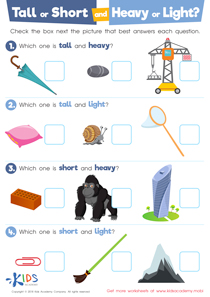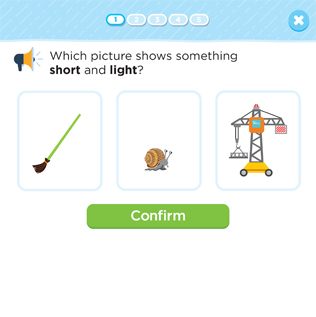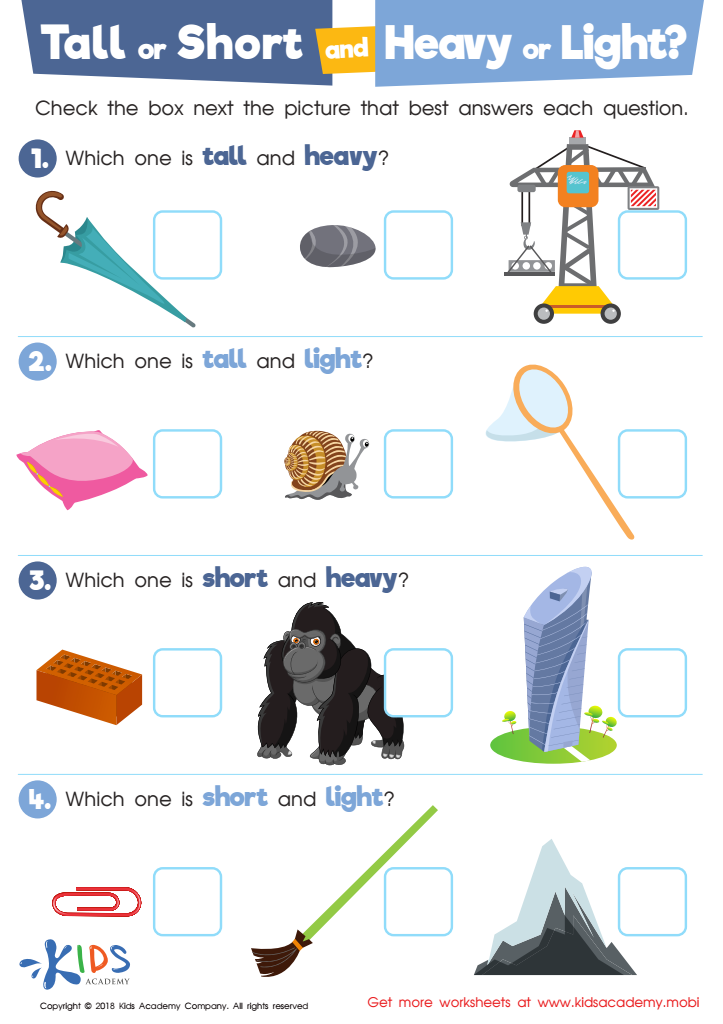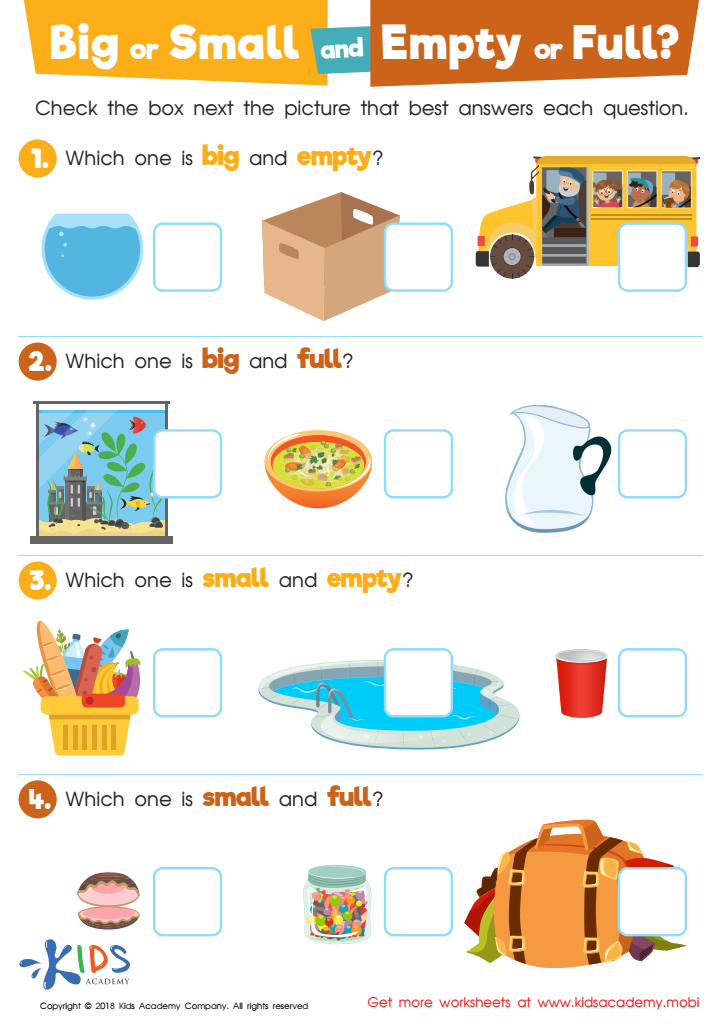Objects with More Than 1 Measurable Attribute - Lesson for Kindergarten, Chapter - Data
In the lesson titled "Objects with More Than 1 Measurable Attribute," kindergarteners will embark on an engaging journey into the realm of Data, nestled within the Early Logic and Geometry unit. Through this lesson, students will learn to identify, compare, and understand objects based on more than one measurable attribute. This includes discerning whether objects are tall or short, heavy or light, big or small, and empty or full. Activities such as the “Tall or Short and Heavy or Light? ” worksheet, alongside the “Big or Small and Empty or Full? ” worksheet, will provide hands-on opportunities to explore and identify two different measurable attributes of various objects.
Understanding the concept of multiple measurable attributes is crucial for young learners as it lays the foundational stone for critical thinking and problem-solving skills. It encourages students to observe their surroundings more keenly and understand the diversity in the physical properties of objects. This knowledge not only enhances their mathematical reasoning but also prepares them for more complex concepts in geometry and data analysis in future grades.



-
Activity 1 / Tall or Short and Heavy or Light? Worksheet
Basic measurement concepts can be tough for young children to grasp as they're just developing the appropriate vocabulary to describe things that are heavy or light and tall or short. This colorful PDF gives them the practice of using all four concept words combined with familiar pictures they can use to make accurate associations with as they select which items are tall, short, heavy and light.
-
Activity 2 / Big or Small and Empty or Full? Worksheet
When young mathematicians are exposed to familiar pictures to reinforce subjective concepts like big and small and empty and full, they're more able to differentiate and identify objects that meet those definitions. This colorful Worksheet uses fun pictures that are familiar to early learners to help give tangible representations to measurement concepts that are often subjective.
-
Activity 3 / Identify 2 Different Measurable Attributes - Quiz
This quiz assesses students’ ability to identify two different attributes of an object.







